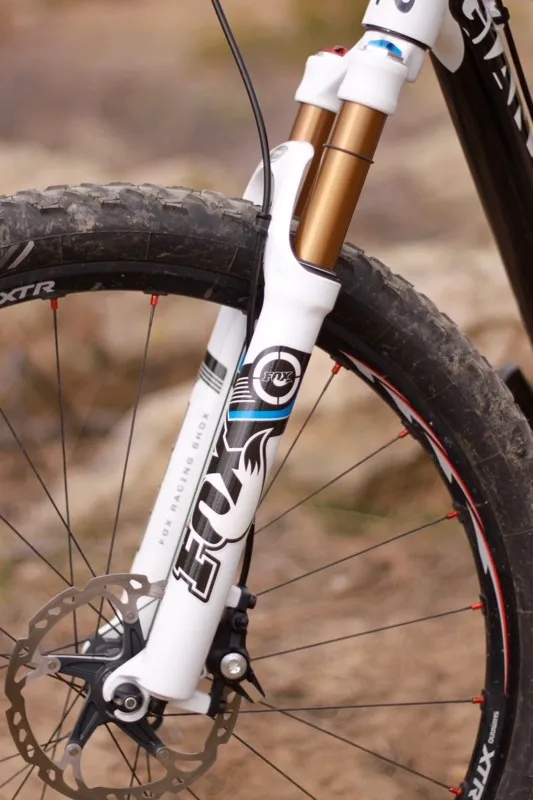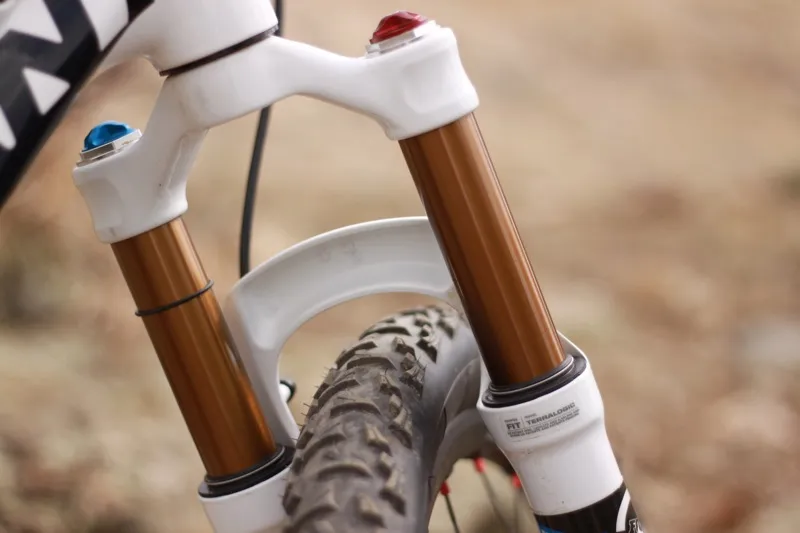Once Fox started development on their FIT RLC bladder damper design for short-travel forks, they pulled their original open bath TerraLogic inertia damper off the market. The concept is back for 2011, however, and we have the exclusive first review.
TerraLogic refers to an automatic lockout that works via an inertia valve. The original incarnation of the system was produced from 2003 to 2007 and was pulled off the market because its performance didn’t match the new standard set by the FIT cartridge. New technology means those previous issues have been addressed, however, and the 2011 fork’s performance has been taken to a new level.
TerraLogic damping will be available on 32 F-Series, F29, TALAS and TALAS29 models in 2011. BikeRadar exclusively tested the US$850 (UK pricing TBC) F100 model for a month prior to Fox’s official launch to bring you this review. The F-series chassis remains relatively unchanged aside from the use of the Kashima Coat, which we explain further below.
Who, what, when, where?
The TerraLogic concept is a love-it-or-hate-it technology. It’s geared toward cross-country racers, but also caters to the set-it-and-forget-it crowd and even the all-mountain brigade. It’s best for riders who prefer to just get on with pedalling, rather than those who enjoy tuning their suspension for a particular course or trail, or like to flip levers during the ride.
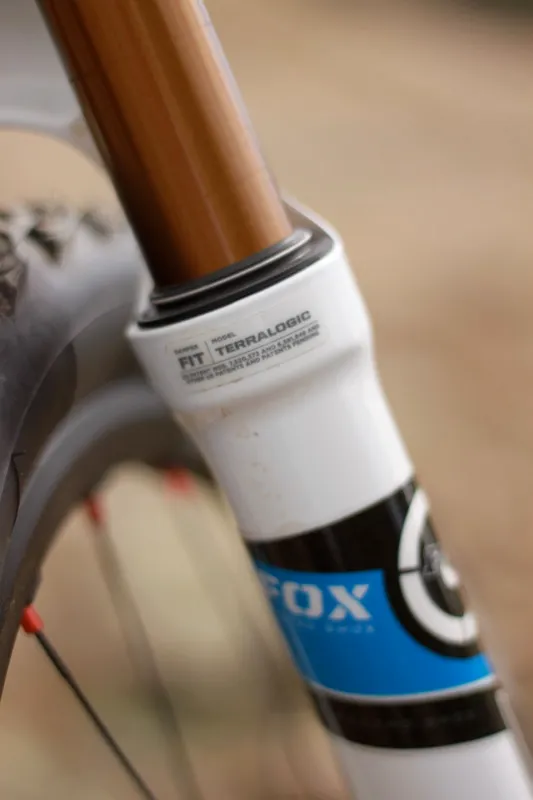
No levers to flip, mid-ride, on this fork
TerraLogic is also predominately a hardtail technology. Why? Unless you’re riding a suspension bike with some sort of pedalling platform that wants to lock out when you stand on it – say dw-link, VPP or Specialized with rear inertia damper – the bike will be hard to balance. This is especially noticeable when standing or sprinting on smooth terrain or road.
That said, we originally fitted our F100 TerraLogic fork on a hardtail but it eventually found its way to a Giant Anthem full-suspension bike where, after a bit of tuning, we found an acceptable balance and performance that would be ideal for racing.
On the hardtail, the TerraLogic performed better than any other damper we've ridden. Once the fork’s bump threshold (which lets you set the amount of force needed to deactivate the lockout) was ‘bracketed’ — adjusting the threshold in from full open until it sufficiently quieted during climbing and sprinting — we did adjust one or two clicks each way depending on the terrain, but nothing more. Fine-tuning was much like with a rebound damper; very rarely do you make large adjustments from your original preferred position.
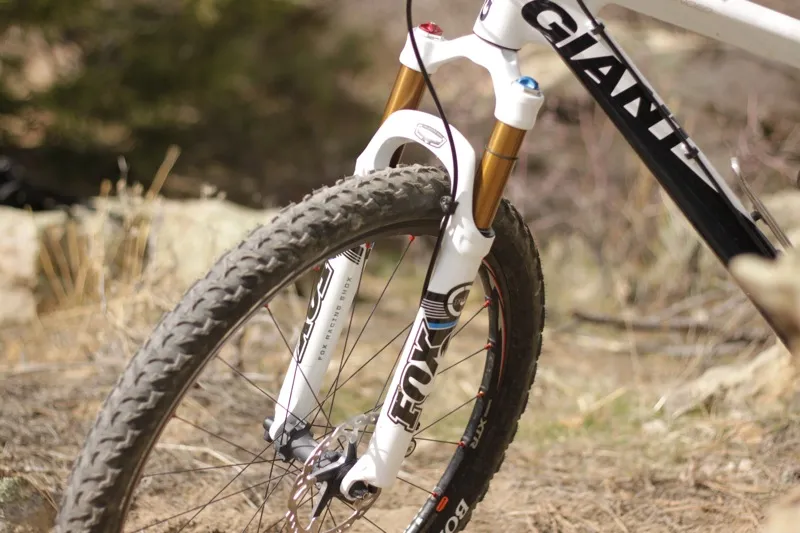
TerraLogic on Giant's Anthem
The new F100 TerraLogic is the best fork we've ridden for hardtail mountain bikes, especially when the task is racing. However, once we moved it over to the full-suspension bike, a few bugs did crop up. It’s here that we have to say that, if we were spending our own money, we'd probably stick with an RLC damped fork for a full-suspension bike. The reason is the aforementioned balancing difficulty.
Balancing an RLC fork with an RP23 shock is pretty easy once you’ve got the hang of it. By using the lockout threshold force adjuster on the fork you can match it to each of the three levels of rear ProPedal platform damping adjustment almost perfectly on many bikes. If you have these components and haven’t worked to find this balance, you’re truly missing out.
With the TerraLogic damper you again select your threshold but once that’s overcome, the fork abruptly opens up and this feeling – almost like an unhinging – unbalances the bike. Depending on the rear suspension design, we imagine the effect will vary from slightly noticeable to extremely irritating. On the Giant Anthem we tested it with, it’s ever so slightly noticeable.
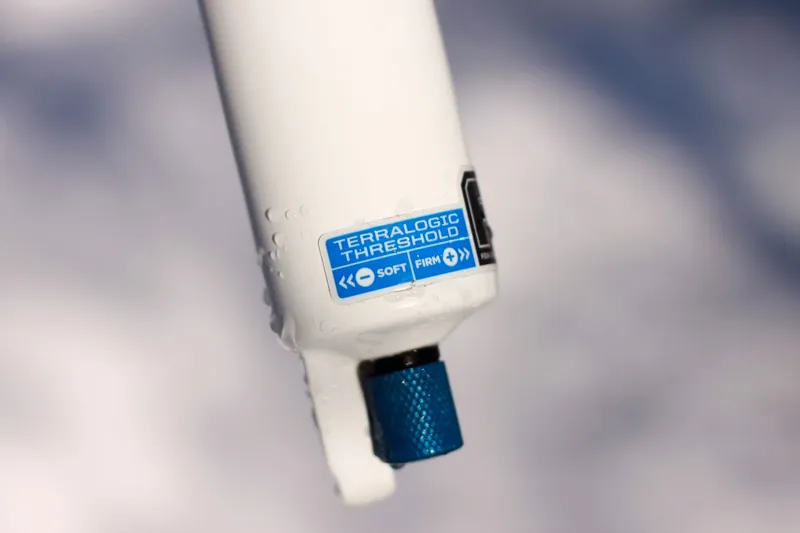
The 15-click damper adjustment brings the fork from the full-open feel of an R damper to the full-closed feel of a locked out RL damper
However, the advantage to being able to 'set it and forget it' is still there, especially for cross-country racers. The old TerraLogic technology was liked by many racers and the new version has a much broader range in its threshold adjustment, with 15 clicks that vary the feel from full lockout to what feels like just low-speed compression, to no perceivable platform at all – a major improvement.
Balancing issues aside, there are two other chinks in the F100 TerraLogic fork’s armour: its weight – 1,590g with full 265mm steerer tube, which is about 135g heavier than the equivalent RLC damped fork – and the placement of the threshold adjuster at the bottom of the right fork leg.
After Fox moved the RLC’s threshold adjuster to our fingertips at the top of the leg, we're left wanting it up high on this fork too. Unfortunately, the nature of the inertia valve means its mass must be attached to the lower leg for it to work. “We’d love to put the threshold on the top, but it just doesn’t function if the valve is at the top,” said Andrew Laird, Fox’s lead engineer for the TerraLogic project.

The rebound adjuster gets prime position on the top of the right leg
Video showing descending with Fox’s 2011 TerraLogic, five clicks from full-closed:
Unable to load media
Video showing sprinting with Fox’s 2011 TerraLogic, five clicks from full-closed:
Unable to load media
TerraLogic and FIT integrate
The main difference between the new fork and the previous discontinued TerraLogic dampers is how the bump threshold adjustment works. In adjusting the old open bath system, you changed the spring force exerted to hold the inertia mass in the closed position. More tension kept the valve closed over harder hits.
The new damper has four key components that influence BrassMass automatic lockout and compression damping: the inertia valve, threshold adjustment circuit, inertia timing valve and speed sensitive shim stack. First and foremost, the new system’s inertia valve lockout uses a separate circuit.
Instead of increasing the spring force holding the inertia valve closed, like the old system, the new TerraLogic damper uses a blow-off piston circuit to adjust its platform feel, which operates like the threshold adjustment system used in the RLC damper.
The new TerraLogic damper also incorporates the FIT design of an expanding bladder. It’s a closed system, which is both lighter and more resistant to cavitation (which leads to fade) that the open system was. FIT also helps smooth the transitional feel of the inertia valve from open to closed.
Furthermore, the new damper has a timing valve that keeps the inertia valve from becoming confused after extended bouts of descending – an issue for the old system. Finally, once the damper fluid runs through the threshold circuit or the inertia valve it is controlled by a speed sensitive (referring to damper shaft speed) shim stack.
“We didn’t want limitations, but we felt that one adjuster was sufficient; we didn’t want it to be too complicated,” said Laird, when asked why the inertia valve’s preload adjuster was removed from the new damper. “We feel that the blow-off adjuster offers a greater benefit than the spring preload [on the inertia mass], because it can really change the characteristic of the fork from full-firm to full-open, like you’re running an R damper.”
In the new damper, adjusting the ‘platform’ feel doesn’t affect how the inertia valve works at all; no matter if the threshold is set fully closed or open, it takes the same amount of force to open it – just over a G. The actual force required to overcome the inertia valve’s threshold is a closely guarded secret that is based upon the eight years Fox spent developing and producing TerraLogic. Its development cycle never really stopped even though production did.
“There’s a lot of testing that goes into that,” said Laird. “It’s as close as you can be, without it opening too often.” Besides the benefit of FIT, the dedicated threshold valve allows for a simpler inertia valve, which is said to be both more consistent and more robust than the old adjustable version.
Going for gold
The biggest story outside of the new FIT TerraLogic damper is Fox’s use of the Miyaki Company’s Kashima Coat on the fork’s legs. All of Fox’s high-end aftermarket forks, including RC2, RLC, TerraLogic and Remote damped versions, get the slippery coating for 2011.
The Japanese motorsports company’s coating is said to reduce friction and improve the legs’ resistance to wear. It's said to quadruple the hardness and abrasion resistance of the stanchions, when compared to a standard hard anodised finish. Since this is a new damper it was hard to put a finger on exactly how the Kashima Coat influences the feel of the fork when riding. We look forward to testing a Kashima Coated coil sprung fork against an equivalent model standard legs later on this year to better evaluate its performance.
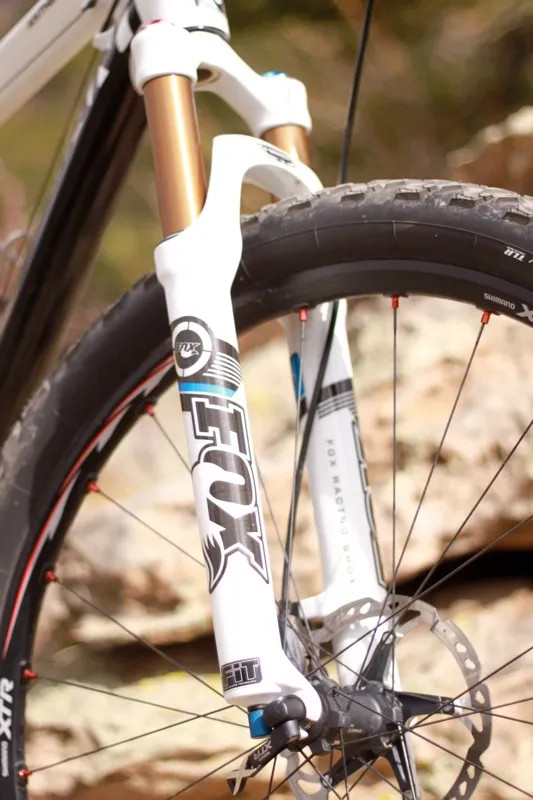
The Kashima Coat gives the upper legs a golden hue
“We started racing on it last year with just our downhillers because that’s where you see the most wear and tear,” said Elayna Caldwell, Fox’s marketing manager. “We'd tried other coatings in the past like electroless nickel and had good results for racing, but we weren’t comfortable with it for long-term durability and putting it on production products. Last year we used the Kashima coat and we’re happy with the durability for consumer use.”
Where will TerraLogic end up?
Overall, this is the fork we’d pick from Fox’s line for any hardtail: 26er or 29er, for racing or just riding. It’s a superb and refined technology that shines.
For the full-suspension user, it’s much tougher to whole-heartedly recommend TerraLogic over RLC. The set-it-and-forget-it rider using a suspension chassis with anti-squat or Specialized’s inertia damped rear shock will be impressed. But the tuners, the riders who enjoy really maximising their suspension performance, are still going to be best off with the latest FIT RLC damper.

